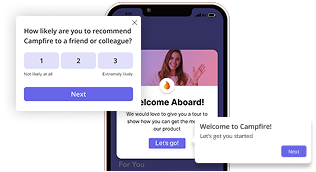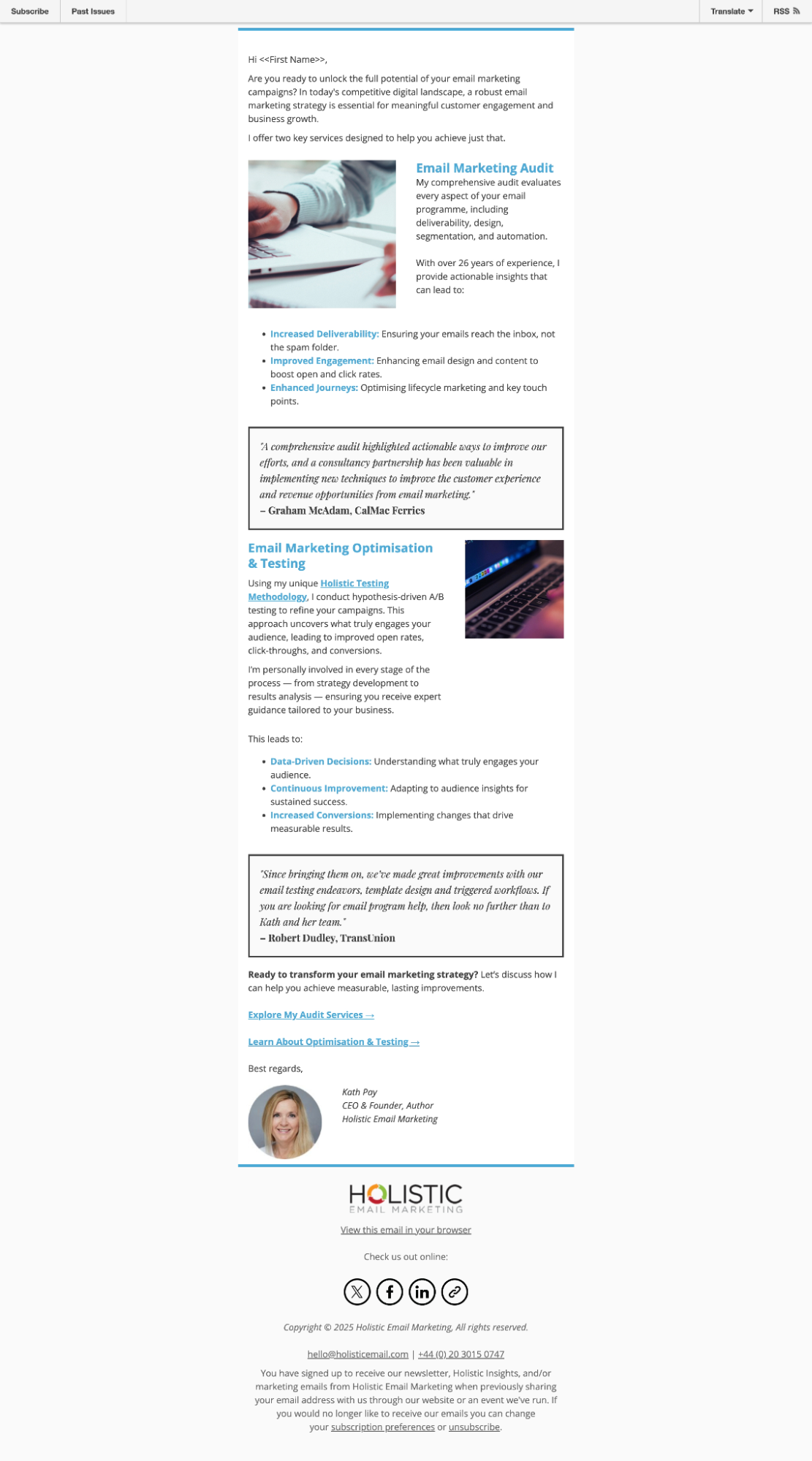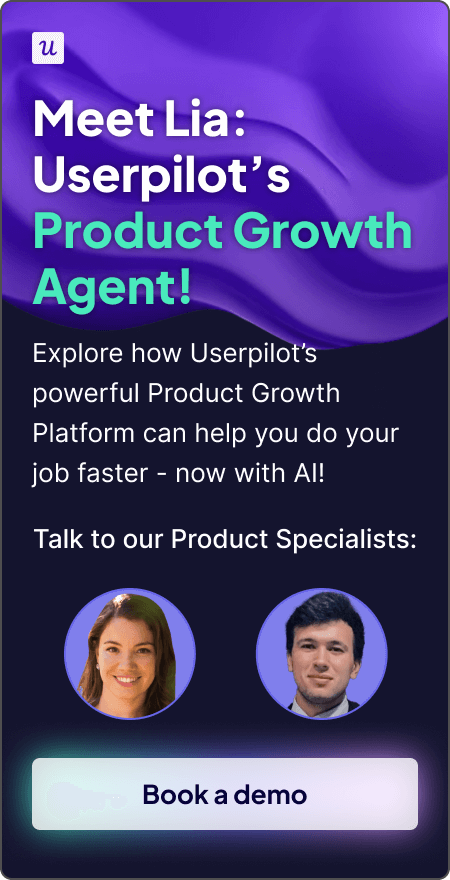How Cognitive Biases Shape Email Engagement
Cognitive biases are mental shortcuts people use subconsciously to make sense of information as quickly and easily as possible. We all use them, and most of us probably don’t even know how much we rely on them to help us form opinions and make decisions.
Researchers have identified 188 individual cognitive biases. Not all of them apply to marketing, but several that you might not be as familiar with can be equally powerful in shaping your subscribers’ engagement with your email.
In this article, I’ll share several cognitive biases that have worked well in my own email marketing and explain how to use them ethically in your campaigns. I’ll also include a B2B email example where I combined multiple biases with an appeal to four types of buyers: a challenging task, but one that delivered impressive results.
Try Userpilot Now
See Why 1,000+ Teams Choose Userpilot

Why should we appeal to cognitive biases in email copy and design?
People want to process and understand information completely. They will not spend minutes puzzling over your email message and trying to determine what to do with it.
In email copywriting, shorter sentences and bullet points help the brain grasp important points. Email design techniques, such as incorporating white space around essential information or graphics that direct the reader to a call to action, draw attention to these key areas and encourage the reader to take action.
Testing can show you which cognitive biases work best for different buyer segments and at different points on the customer lifecycle or journey.
The fear of missing out (FOMO), while one of the most commonly used cognitive biases, is often the least effective in many scenarios.
Caveat: Use cognitive bias ethically
I’ll say it again: We use cognitive biases not to mislead subscribers or customers or to manipulate them to do something they wouldn’t do otherwise. Rather, these devices can break through the noise in their inboxes, clarify your offers and value, and make the decision to click through even easier.
Here are three ways you can check yourself to be sure you’re operating above board with your subscribers and customers:
- Align the biases you choose with genuine audience needs.
- Avoid manipulative tactics, such as fake urgency or misleading subject lines.
- Keep the focus on adding value as you guide and encourage engagement.
Customers can sniff out insincerity, so don’t do anything that could damage trust in your brand, company, products, or services.
When you learn which cognitive biases are most effective in persuading people to do what you want them to, like opening and clicking on an email message and converting from it, you can use them in your messaging to make your emails easy and even attractive to act on.
4 Common cognitive biases that influence email engagement
These are the most commonly used biases in email marketing, especially in one-off email campaigns.
| Cognitive bias | What is it? | Example | Ethical use |
| Curiosity | Most people are curious by nature. Ask them a question that taps into an important area, and the brain compels the reader to open the email for the answer. | “Guess What’s Driving 60% of Our Sales This Month?” | Be sure your content answers the question in a way that means something to your readers. Avoid clickbait that doesn’t pay off. |
| Anchoring effect | People rely on the first information you present and use it to judge the value of other information. | “Normally $299, now only $149!” | Don’t inflate the original pricing. Misleading anchors can harm trust if uncovered. |
| Loss aversion | People fear losing something more than they want to gain something. | “Hurry! Only 3 seats left!” | Strike a balance between urgency and authenticity, and minimize its use. |
| Social proof | People seek and trust others’ opinions and actions when deciding whether to act. | “Join 15,000 other marketers using this tool.” | Use genuine testimonials with details like full name, company, photo, and source, where possible. |
5 Cognitive biases to explore for increasing email engagement
Ready to experiment a little? These cognitive biases can add intrigue and engage your subscribers’ brains at a deeper level, especially in special-use emails like abandoned-cart reminders.
| Cognitive bias | What is it? | Example | Ethical use |
| Von Restorff effect (isolation effect) | People are more likely to remember items that stand out. | “Take 25% off your first purchase.” | Highlight a specific word or phrase in boldface or color. Use a CTA button or a contrasting text link. |
| Zeigarnik effect | People remember unfinished tasks more than completed ones. | “You’re Almost There — Complete Your Profile to Unlock Exclusive Content!” | Use in abandonment emails and tell customers exactly what step is left to complete. |
| IKEA effect | People value the things they create. | Send an interactive email asking subscribers to vote on the next content piece or product feature. | Follow up showing how their input influenced the outcome. E.g., share voting results. |
| Baader-Meinhof phenomenon (frequency illusion) | Once someone notices something, they tend to see it more often. | Repeat a key benefit or message across multiple emails in a campaign sequence. | Ensure repeated content is truthful and accurately represents your offer. |
| Endowment effect | People value things or benefits they already own more highly. | “Your VIP Access Awaits — Don’t Miss Out on These Exclusive Benefits.” | Make sure the email is sent to recipients who actually qualify for the benefits. |
Quick case study: Boosting engagement with cognitive biases
In a test campaign for my agency, I crafted email content designed to appeal to four buyer modalities: “competitive,” “spontaneous,” “humanistic,” and “methodical,” drawing on research by Jeffery and Bryan Eisenberg, the insights of Greek philosopher Hippocrates and the expertise of usability specialist Jakob Nielsen.
I also incorporated six cognitive biases: authority, social proof, loss aversion, clarity, curiosity, and certainty, each of which I’ve found effective through testing with my audience.

Here’s how I structured the email around the buyer modalities:
Competitive (goal-oriented)
- What resonates: “Elevate Your Email Marketing,” “Increased Conversions,” “Comprehensive Audit,” and “Key Services.”
- Reason: Direct focus on results, optimization, and achieving better ROI.
Spontaneous (in the moment)
- What resonates: The preheader and call-to-action phrases like “Ready to transform your email marketing strategy?” and “Unlock the full potential” focus on quick wins and use results-driven language.
- Reason: These shoppers like to decide quickly and often act based on an appeal to emotional needs.
Humanistic (story- and relationship-driven)
- What resonates: Testimonials and my involvement with client successes.
- Reason: Clients need to trust in my expertise.
Methodical (detail- and process-oriented)
- What resonates: Bullet points and a clear breakdown of benefits, explaining the methodology behind my testing plan and email audits.
- Reason: These buyers are logical and detail-focused thinkers who rely on data-driven decisions and specific processes.
And this is how I shaped the copy to accommodate the six key cognitive biases:
- Authority: “With over 26 years of expertise” emphasizes my authority and experience, influencing trust in the recommendations.
- Social proof: I included two brief client testimonials addressing competitive and methodical buyers.
- Loss aversion: “Ensuring your emails reach the inbox, not the spam folder” hints at the fear of missing out on potential conversions that result from poor deliverability.
- Clarity: Bullet points and lists clearly outline benefits, helping the reader process information quickly.
- Curiosity (progressive disclosure): The preheader, “Discover how my tailored strategies can transform your campaigns and drive measurable results,” teases results without revealing all the details, encouraging further reading.
- Certainty (data-driven proof): Copy referring to “data-driven decisions” and “increased conversions” highlights measurable outcomes, appealing to methodical or logical thinkers.
Bringing it all together
As promised, here’s a quick reading list of articles I’ve written to give you more background information about writing for the brain by appealing to the mental shortcuts people use to process information quickly and guide their decision-making:
- The perfect combination: GenAI and persuasion strategies for unbeatable A/B tests
- The perfect combination: GenAI and persuasion strategies for unbeatable A/B tests, Part 2
- How persuasive email design can influence the e-commerce customer journey
- Why and how to use loss aversion in email marketing (plus 4 examples)
- Design emails for 4 personality types to win back customers
When we understand how people process information and make decisions, we can craft more engaging and persuasive emails. However, it’s our responsibility to use this knowledge wisely and ethically to maintain the trust we’ve worked hard to build.


